Jeep wrangler windshield wipers won’t shut off. This issue could be caused by a faulty wiper switch or a malfunctioning motor.
Experiencing a problem where your jeep wrangler’s windshield wipers refuse to turn off can be frustrating and potentially dangerous. While it may seem like a simple inconvenience, it’s important to address this issue promptly. If left unresolved, it can impair visibility during heavy rainfall or pose a hazard to other drivers on the road.
There are a couple of possible reasons why your windshield wipers won’t shut off, including a faulty wiper switch or a malfunctioning motor.
We will delve into the potential causes and provide some troubleshooting tips to help you resolve this problem with your jeep wrangler.
Understanding The Issue: What Causes Jeep Wrangler Windshield Wipers To Stay On?
Having your jeep wrangler windshield wipers malfunction and stay on can be a frustrating experience. Not only can it obstruct your vision while driving, but it can also lead to potential damage to the wiper system. Understanding the root causes of this issue can help you identify the problem and find a solution promptly.
Below are the common culprits behind jeep wrangler windshield wipers that won’t shut off:
Malfunctioning Wiper Switch
- The wiper switch, located on the steering column, can become faulty over time and cause the wipers to stay on.
- A damaged or worn-out wiper switch may not properly communicate with the wiper motor, resulting in a continuous operation.
- Moisture, dirt, or debris accumulation within the switch assembly can also interfere with its functionality.
- Replacing the wiper switch is often necessary to resolve this issue.
Faulty Wiper Motor
- A malfunctioning wiper motor can cause the wipers to remain active even when the switch is turned off.
- Worn-out internal components, such as brushes or gears, can prevent the motor from receiving the proper signal to shut off.
- In some cases, the motor may continue running due to electrical short circuits or damaged wiring.
- Replacing the faulty wiper motor is typically required to rectify this problem.
Electrical Connection Issues
- Poor electrical connections in the wiper circuit can also lead to ongoing wiper operation.
- Loose or corroded wiring connections between the wiper switch, motor, and other components can disrupt the electrical flow.
- Damage to the wiring harness, such as frayed or broken wires, can create intermittent power interruptions that keep the wipers on.
- Thoroughly inspecting and repairing any damaged or defective electrical connections can often resolve this issue.
Rain Sensor Problems
- Some jeep wrangler models are equipped with rain-sensing wipers that automatically activate in wet conditions.
- However, a malfunctioning rain sensor can cause the wipers to stay on continuously, even when there is no rain.
- Issues with the sensor’s sensitivity settings or a defective sensor module can lead to this problem.
- Calibrating or replacing the rain sensor may be necessary to fix the persistent wiper operation.
Understanding the underlying causes of jeep wrangler windshield wipers that won’t shut off can help you troubleshoot the problem effectively.
Whether it’s a malfunctioning wiper switch, a faulty wiper motor, electrical connection issues, or rain sensor problems, addressing these issues promptly will ensure optimal functionality of your wiper system.
1. Checking The Wiper Switch
Inspecting The Wiper Control Module:
One of the first things to check when your jeep wrangler windshield wipers won’t shut off is the wiper control module. This module is responsible for controlling the various functions of the wipers, including their speed and the ability to turn them off.
Here are a few key points to keep in mind when inspecting the wiper control module:
- Locate the wiper control module: The wiper control module is usually located behind the dashboard or inside the engine compartment. Consult your jeep wrangler’s manual to find its exact location.
- Check for any signs of damage: Inspect the module for any visible signs of damage, such as burnt or corroded connectors, loose wires, or cracked casing. These can indicate a faulty module that needs to be replaced.
- Look for loose connections: Ensure that all the wiring connections to the module are secure. Loose connections can cause intermittent or malfunctioning wiper operation.
- Test the module: If you suspect the module is faulty, you can perform a diagnostic test using a multimeter. Follow the instructions in your vehicle’s manual to conduct the test and determine if the module needs to be replaced.
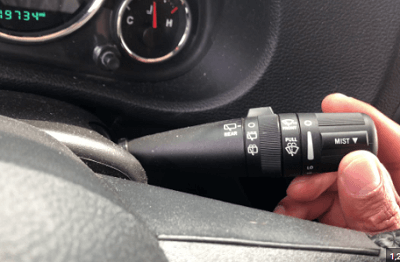
Testing The Wiper Switch For Continuity:
The wiper switch is another crucial component to check when your jeep wrangler windshield wipers won’t shut off. The switch enables you to control the wiper functions, including turning them on and off. Here’s what you need to know about testing the wiper switch for continuity:
- Locate the wiper switch: The wiper switch is typically located on the steering column or the control stalk behind the steering wheel.
- Turn off the ignition: Before testing the wiper switch, make sure the ignition is turned off to prevent any electrical accidents.
- Access the switch wiring: Depending on your jeep wrangler model, you may need to remove some panels or covers to gain access to the wiring connections for the wiper switch.
- Test for continuity: Using a multimeter set to the continuity mode, touch the probes to the appropriate switch terminals to check if there is a continuous electrical flow when the switch is in different positions (off, intermittent, low, high).
- Identify any signs of damage or wear: Inspect the wiper switch for any signs of physical damage or wear, such as broken or corroded connectors. Damaged switches may require replacement to restore proper wiper functionality.
By inspecting the wiper control module and testing the wiper switch for continuity, you can troubleshoot and diagnose why your jeep wrangler windshield wipers won’t shut off. Remember to always consult your vehicle’s manual for specific instructions and guidance tailored to your jeep model.
2. Assessing The Wiper Motor
Understanding The Functionality Of The Wiper Motor
The wiper motor is a critical component of your jeep wrangler’s windshield wipers. It powers the movement of the wiper blades, allowing them to clean the windshield effectively. If your wipers won’t shut off, it could be due to an issue with the wiper motor.
Here’s a breakdown of how to assess the wiper motor and identify potential problems:
- Verifying proper voltage supply to the motor: The first step is to ensure that the wiper motor is receiving the correct voltage supply. This can be done using a multimeter. Follow these steps:
- Set the multimeter to voltage mode.
- Connect the red probe to the positive side of the battery and the black probe to the negative side.
- Touch the red probe to the wire that supplies power to the wiper motor.
- Check the reading on the multimeter. It should match the vehicle’s battery voltage.
- If the reading is significantly lower, there may be an issue with the wiper motor’s power supply.
- Checking for motor resistance issues: If the voltage supply is not the problem, it’s essential to check for any resistance issues within the wiper motor. Here’s what you can do:
- Disconnect the motor from the vehicle’s electrical system.
- Use the multimeter to measure the resistance across the motor’s terminals.
- Compare the reading to the manufacturer’s specifications. If it deviates significantly, there may be a problem with the motor’s windings or brushes.
- Inspecting the wiper motor’s mechanical integrity: Another potential cause for the wipers not shutting off is mechanical issues within the wiper motor. Follow these steps to assess the motor’s mechanical integrity:
- Visually inspect the wiper motor for any signs of damage or corrosion.
- Check the motor’s linkage and pivots for any obstructions or worn-out parts.
- Ensure that the motor operates smoothly when manually actuated.
- If you notice any significant damage or mechanical issues, it may be necessary to replace the wiper motor.
Assessing the functionality of the wiper motor is crucial in troubleshooting the issue of the wipers not shutting off on your jeep wrangler. By following these steps, you can identify any potential problems with the motor and take appropriate measures to resolve them.
Remember, if you’re unsure or uncomfortable with performing these assessments yourself, it’s always best to consult a professional mechanic.
3. Addressing Electrical Connection Problems
Addressing Electrical Connection Problems
Is your jeep wrangler’s windshield wiper not shutting off? One possible cause of this issue could be electrical connection problems. These problems can result from frayed or damaged wires, blown fuses, or loose and corroded electrical connections. In this section, we will explore how to address these electrical connection problems effectively.
Examining The Wiring Harness For Any Frayed Or Damaged Wires:
- Inspect the wiring harness carefully to identify any signs of frayed or damaged wires.
- Look for exposed wires, cuts, or abrasions in the wiring harness.
- If you discover any frayed or damaged wires, they will need to be repaired or replaced promptly.
- Ensure that the replacement wires have the correct gauge and are properly insulated.
Testing The Fuses Related To The Wiper System:
- Locate the fuse box in your jeep wrangler, usually found under the dashboard or in the engine compartment.
- Identify the fuses related to the windshield wiper system, usually labeled as “wiper” or “wipers.”
- Use a multimeter or a fuse tester to check the continuity of the fuses.
- If a fuse is blown, replace it with a new one of the same amperage rating.
- If the newly replaced fuse blows immediately, there may be an underlying electrical issue that requires further investigation.
Identifying And Resolving Any Loose Or Corroded Electrical Connections:
- Inspect all electrical connections related to the windshield wiper system, including the wiper motor, wiper switch, and control unit.
- Check for any loose connections that may require tightening.
- Clean any corrosion from the electrical terminals using a wire brush or a contact cleaner.
- Apply dielectric grease to the connectors to prevent future corrosion.
- If the electrical connections appear damaged or excessively corroded, they may need to be replaced.
Remember, addressing electrical connection problems requires careful troubleshooting and attention to detail. If you’re unsure or uncomfortable working with electrical systems, it’s always best to consult a qualified mechanic or seek professional assistance.
Clean Windshield Maintenance
Proper cleaning techniques for improved wiper performance.
Maintaining a clean windshield is essential for optimal functionality of your jeep wrangler’s windshield wipers. Regular cleaning not only ensures clear visibility but also minimizes strain on the wiper motor. Follow these key points to properly clean your windshield and maximize your wiper performance:
- Use the right cleaning products: Opt for a mild, non-abrasive glass cleaner that won’t damage the windshield or harm the surrounding paintwork. Avoid using harsh chemicals or abrasive materials that can cause scratches or streaks.
- Start with the windshield exterior: Begin by spraying the glass cleaner on the windshield’s exterior surface. Use a clean microfiber cloth or soft sponge to gently wipe away dirt, grime, and any insect residue. Ensure thorough coverage and pay attention to the corners and edges.
- Pay attention to the windshield interior: Move on to cleaning the interior of the windshield. Use the same glass cleaner and a separate clean cloth. Starting from the top, wipe the entire surface in a vertical motion to remove any dirt, dust, or smudges.
- Clean the wiper blades: To maintain optimal wiper performance, it’s important to clean the wiper blades regularly. Use a damp cloth soaked in mild soap water to gently wipe away any built-up debris, dead leaves, or dirt. This step helps prevent streaking and ensures smooth operation of the wipers.
- Remove dirt and debris from the wiper cowl: The wiper cowl, located at the base of the windshield, tends to collect debris over time. Use a small brush or a toothbrush to remove any dirt or leaves that may be obstructing the wiper mechanism. This step helps prevent strain on the wiper motor and ensures proper functioning of the wipers.
- Inspect for any windshield damage: While cleaning, keep an eye out for any windshield damages such as cracks or chips. These can worsen over time and may hinder proper wiper operation. If you notice any damage, it’s advisable to get it repaired or replaced promptly to maintain optimal visibility.
- Regular maintenance schedule: Establish a regular cleaning and maintenance schedule for your windshield. Depending on the conditions you drive in, cleaning once or twice a month should suffice. However, if you frequently encounter dusty or dirty roads, consider cleaning more often.
- Store your jeep appropriately: Parking your jeep indoors or using a windshield cover can help prevent excessive dirt, debris, and bird droppings from accumulating on the windshield. This reduces the strain on your wipers and ensures a cleaner windshield when you start your journey.
By following these proper cleaning techniques and maintaining a regular cleaning schedule, you can improve the performance and longevity of your jeep wrangler’s windshield wipers. Remember, a clear and well-maintained windshield not only enhances your driving experience but also promotes road safety.
So, take care of your windshield and enjoy smooth, streak-free wiper operation on your next jeep adventure.
Rain Sensor Calibration
Have you ever experienced the frustration of your jeep wrangler windshield wipers refusing to shut off? It’s a common issue that can leave you feeling helpless, especially when you’re on the road and the rain has stopped. One of the causes of this problem could be the rain sensor calibration.
In this section, we’ll explore the role of rain sensors in automatic wiper control and discuss how to reset or recalibrate them to resolve any wiper issues.
Understanding The Role Of Rain Sensors In Automatic Wiper Control
- Rain sensors are an integral part of a jeep wrangler’s automatic wiper control system.
- These sensors detect the presence and intensity of rain and control the speed of the wipers accordingly.
- Rain sensors ensure that your windshield is clear and your visibility is optimal during rainy weather conditions.
- They work by using infrared light beams to detect raindrops on the windshield.
Resetting Or Recalibrating The Rain Sensor To Resolve Wiper Issues
- If your jeep wrangler’s windshield wipers won’t shut off, calibration may be necessary.
- To begin the calibration process, start by ensuring that your wipers are turned off and your vehicle is in park mode.
- Locate the rain sensor on your windshield, usually near the rearview mirror mount.
- Clean the rain sensor using a soft cloth and a gentle cleaner to remove any dirt or debris that may be affecting its performance.
- After cleaning, turn the ignition key to the “on” position without starting the engine.
- Locate the wiper stalk on your steering wheel and set it to the “off” position.
- Next, press the stalk downward and hold it for around four seconds. This will initiate the rain sensor calibration process.
- Once calibration starts, you may notice the windshield wipers go through a series of wipes at different speeds.
- Once the calibration process is complete, the wipers should return to their default rest position.
- Test the wipers by spraying a small amount of water on the windshield or by activating the windshield washer function to ensure that they are functioning properly.
By following these simple steps, you can reset or recalibrate the rain sensor on your jeep wrangler and resolve any issues with the windshield wipers not shutting off. Remember, it’s important to clean the rain sensor regularly to maintain its proper functioning.
Don’t let wiper issues dampen your driving experience – take control and ensure clear visibility even in the rain!
Replacing Wiper Blades
Evaluating The Condition Of The Wiper Blades
Wiper blades are an essential component of your jeep wrangler’s windshield system, ensuring a clear view of the road in all weather conditions. It is important to regularly evaluate the condition of your wiper blades to ensure optimal performance. Here are a few key points to consider when assessing the state of your wiper blades:
- Visual inspection: Start by visually inspecting the wiper blades for any visible signs of wear and tear. Look for cracks, peeling rubber, or frayed edges. If you notice any damage, it’s time to replace them.
- Streaking or smearing: If your wiper blades are leaving streaks or smears on the windshield, it indicates that the rubber is worn out and no longer making proper contact. This can hinder visibility and compromise your safety on the road.
- Skipping or squeaking: If you hear skipping or squeaking noises when the wiper blades are in use, it’s a sign that they are not gliding smoothly across the windshield. This can be due to worn-out rubber or a bent wiper arm, both of which need to be addressed promptly.
- Age of the blades: As a general rule, wiper blades should be replaced at least once a year, even if they appear to be in good condition. Over time, exposure to the elements can cause the rubber to deteriorate, leading to reduced effectiveness.
Step-By-Step Instructions For Safely Replacing Worn-Out Wiper Blades
When it’s time to replace your jeep wrangler’s worn-out wiper blades, follow these step-by-step instructions to ensure a safe and hassle-free process:
- Gather the necessary tools: You will need the new wiper blades that are compatible with your jeep wrangler model, a soft cloth or towel, and possibly a small screwdriver (depending on your wiper blade design).
- Lift the wiper arm: Gently lift the wiper arm away from the windshield until it locks into a raised position. This will provide easier access to the wiper blade.
- Locate the release tab: Look for the small release tab or button on the underside of the wiper blade. Press or slide it to release the blade from the wiper arm. Some blades may have a small screw that needs to be removed with a screwdriver.
- Remove the old blade: Once the release tab is pressed or the screw is removed, carefully pull the old wiper blade away from the wiper arm, taking note of how it was attached for future reference.
- Prepare the new blade: Take the new wiper blade and ensure it is the correct size and fit for your jeep wrangler. If necessary, refer to the manufacturer’s instructions or consult a professional for guidance.
- Install the new blade: Align the new wiper blade with the wiper arm and slide it into place. You should hear a click or feel a secure connection when it is properly attached.
- Test the wiper blade: Lower the wiper arm back onto the windshield and test the new blade by activating the wiper system. Make sure it moves smoothly and clears the windshield effectively without any streaks or noise.
- Repeat for the other side: If necessary, repeat the same steps for the other wiper blade on your jeep wrangler.
- Clean the windshield: Before concluding the replacement process, clean the windshield with a soft cloth or towel to remove any debris or residue.
- Regularly check and maintain: It’s important to regularly check the condition of your new wiper blades and replace them as needed to ensure optimal performance and visibility.
By following these simple steps, you can easily replace your jeep wrangler’s worn-out wiper blades, ensuring a safer and clearer driving experience in varying weather conditions.
Regularly evaluating and maintaining your wiper blades will help keep your windshield clean and your visibility uncompromised.
Stay ahead of the game and take care of your wiper blades for years of reliable performance.
Frequently Asked Questions On Jeep Wrangler Windshield Wipers Won’T Shut Off
Why Won’T My Jeep Wrangler Windshield Wipers Turn Off?
If your jeep wrangler windshield wipers won’t shut off, it could be due to a faulty wiper control module or a malfunctioning multifunction switch. It’s best to have a professional mechanic diagnose and repair the issue to ensure proper functionality and safety while driving.
Can A Blown Fuse Cause My Jeep Wrangler Windshield Wipers To Stay On?
Yes, a blown fuse can cause your jeep wrangler windshield wipers to stay on. Check the fuse box and replace any blown fuses related to the wiper system. If the issue persists, it’s recommended to consult a certified technician for further inspection and repair.
What Are Common Causes Of Jeep Wrangler Windshield Wipers Not Turning Off?
Some common causes of jeep wrangler windshield wipers not turning off include a faulty wiper control module, a malfunctioning multifunction switch, or a blown fuse. It’s recommended to have a professional diagnose the problem and provide the necessary repairs to ensure safe driving conditions.
Conclusion
If your jeep wrangler windshield wipers won’t shut off, it can be a frustrating and potentially dangerous situation. In this blog post, we discussed some common causes of this issue, such as a faulty wiper switch, a malfunctioning motor, or a wiring problem.
We also provided some possible solutions, such as checking the fuse, replacing the wiper switch, or consulting a professional for further inspection. Remember, it’s important to address this issue promptly to ensure your safety on the road and prevent any further damage to your vehicle’s electrical system.
By taking the necessary steps to fix the problem, you can enjoy clear visibility and peace of mind when driving your jeep wrangler, rain or shine.

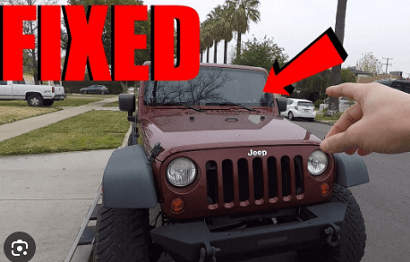
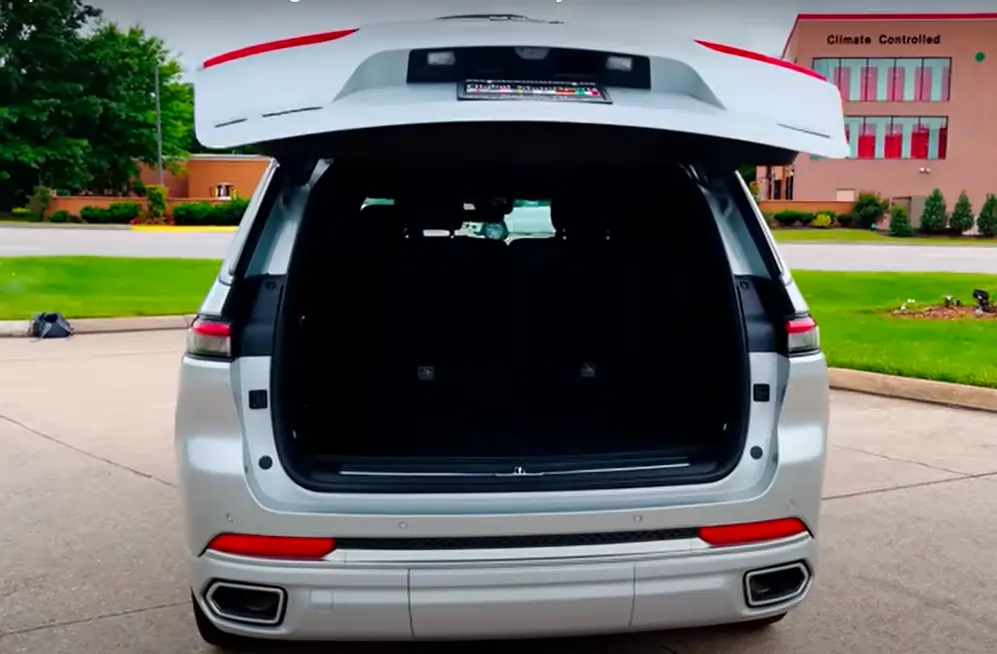
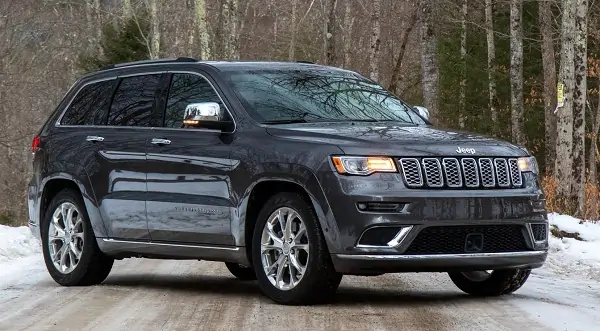




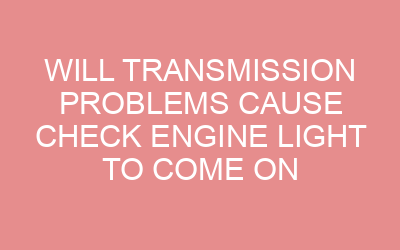





Leave a Reply